Non-Surgical Blog
Understanding Back Pain Spasms: Causes & Treatment
May 1, 2025

- Back spasms are sudden, involuntary contractions of spinal muscles, causing pain and stiffness.
- They often stem from muscle overuse, injuries, and poor posture, but underlying medical conditions can also be culprits.
- Recognizing the symptoms early on allows for quicker intervention and pain relief.
- Treatment options range from home remedies like rest and heat therapy to medical interventions like physical therapy and muscle relaxants.
- Understanding the causes and implementing preventive measures is vital for long-term back health.
Back pain is a widespread issue that can significantly disrupt daily life for people of all ages. One of its common forms is a back spasm—an abrupt, involuntary contraction of the back muscles. It’s essential to grasp the causes, symptoms, and treatment options for back spasms to effectively manage pain and enhance your quality of life.
This detailed guide offers insights into back spasms, empowering you to take control of your back health and access the right treatment.
Exploring the Anatomy of Back Spasms
To fully comprehend how back spasms occur, it’s crucial to understand the underlying anatomy. Your back comprises a complex network of interconnected muscles that support your spine – the bony structure housing and protecting your spinal cord.
These back muscles work in harmony to facilitate movement, maintain posture, and stabilize the spine. During a back spasm, these muscles contract involuntarily, often as a protective response to injury, overuse, or underlying conditions.
This contraction, while sometimes intended to safeguard the spine, results in varying degrees of pain, stiffness, and reduced mobility.
Understanding the interplay between your back muscles, spinal cord, and the protective mechanisms of a muscle spasm provides a foundation for exploring the causes and treatments discussed in this guide.
Understanding Muscle Spasms in the Back
Muscle spasms can occur in any part of the back, but the lower back is a particularly vulnerable area. This is largely due to the lower back’s role in supporting body weight and facilitating a wide range of movements. A muscle spasm in the lower back can range from a mild, temporary twitch to intense, debilitating pain, depending on the severity and underlying cause.
Factors such as poor posture, muscle strain from lifting heavy objects, and muscle weakness due to a sedentary lifestyle often contribute to lower back spasms.
Muscle spasms, while frequently benign and self-limiting, can also indicate a more serious underlying condition, such as a herniated disc or spinal stenosis. Therefore, understanding the causes and seeking appropriate medical advice when necessary is crucial for effective pain management and long-term back health.
Identifying Common Areas Affected by Spasms
Understanding which areas of your back are most commonly affected by spasms can help you better identify the potential causes and seek appropriate treatment. While spasms can occur anywhere along the spine, the lower back is the most frequently affected area.
The lower back, also known as the lumbar region, bears the brunt of your body weight and endures significant stress during daily activities. This makes the muscles and soft tissues in this region susceptible to strains, sprains, and spasms.
The pain from lower back spasms can range from a mild ache to severe discomfort that radiates to the buttocks and legs. Additionally, muscle tightness and limited range of motion are common symptoms associated with spasms in this region.
Identifying pain, stiffness, or limited movement in the lower back can be an early indicator of a possible spasm, prompting you to take appropriate measures for relief and prevention.
Unraveling the Causes Behind Back Spasms
Back spasms can arise from a multitude of factors, often stemming from everyday activities or underlying health conditions. Some common culprits include poor posture, muscle strain from lifting or exercising, and dehydration. Other potential causes range from anxiety and stress to more serious conditions like arthritis or herniated discs. Identifying the specific cause of your back spasm is crucial for effective treatment and preventing future occurrences.
How Dehydration and Electrolyte Imbalance Can Lead to Spasms
Dehydration, often overlooked, plays a surprising role in triggering muscle cramps, including back spasms. When you’re dehydrated, your body loses electrolytes like potassium and magnesium, which are essential for proper muscle function.
This imbalance disrupts the communication between your nerves and muscles, making them more susceptible to spasms. When muscles lack adequate hydration, they become irritable and prone to involuntary contractions. This is why maintaining proper hydration, especially during strenuous activities or hot weather, is crucial for preventing muscle cramps.
In addition to staying well-hydrated, ensuring a diet rich in electrolytes can help maintain the delicate balance needed for optimal muscle function. Consuming foods high in potassium, such as bananas and spinach, and magnesium-rich foods like almonds and avocados can contribute to preventing painful muscle spasms.
The Role of Stress and Mental Health in Triggering Back Pain
The mind-body connection plays a significant role in back pain, with stress and mental health directly influencing muscle tension. When stressed or anxious, your body goes into “fight or flight” mode, releasing hormones like adrenaline and cortisol, which can lead to muscle tightness, including in the back.
This prolonged muscle tension reduces blood flow and oxygen supply to the muscles, causing them to become stiff and more prone to spasms. Chronic stress, if left unaddressed, can create a vicious cycle of pain and muscle tension, contributing to more frequent and severe back spasms.
Incorporating stress management techniques like deep breathing, yoga, or meditation can help alleviate muscle tension and reduce the likelihood of stress-induced back spasms. Addressing underlying mental health conditions through therapy or counseling can also significantly impact your back pain.
Recognizing Symptoms and Signs of Back Spasms
Back spasms often manifest with a distinct set of symptoms, signaling a contraction of your back muscles. The telltale sign is a sudden onset of pain, which can range from a dull, persistent ache to a sharp, debilitating sensation, especially with movement. Accompanying this severe pain is often stiffness in your back, making it difficult to bend or twist. Recognizing these symptoms early on can help you take appropriate measures for pain relief and potentially prevent the spasm from worsening.
Differentiating Between Spasm Pain and Other Back Pains
While sudden and sharp pain in the back commonly indicates a muscle spasm, it’s essential to distinguish it from other types of back pain that might signal more serious conditions. Unlike persistent pain from arthritis or a herniated disc, back spasm pain typically has a sudden onset and can be triggered by movement or posture changes.
Moreover, the pain tends to be localized to a specific area of your back, often accompanied by a tight, knot-like sensation.
If your back pain is chronic or accompanied by other symptoms like numbness, tingling, or weakness radiating down your legs, it’s crucial to seek medical attention promptly. Such symptoms could indicate nerve compression from a herniated disc or other underlying conditions that require specific medical intervention.
When to Seek Medical Attention for Back Spasms
While most back spasms resolve independently with home care, some instances warrant medical attention to rule out severe conditions and receive appropriate treatment. If your back spasm pain is severe, persists despite home remedies, or recurs frequently, it’s advisable to consult us at Chattanooga Non-Surgical Orthopedics.
Furthermore, if your back pain is accompanied by other symptoms like fever, unexplained weight loss, loss of bladder or bowel control, or weakness in your legs, immediate medical attention is crucial.
Seeking medical attention allows for an accurate diagnosis, ensuring you receive the right treatment plan. A healthcare professional can determine the underlying cause of your back spasms and recommend appropriate therapies such as physical therapy, muscle relaxants, or other interventions if needed.
Effective Treatment Options for Back Spasms
Dealing with the agonizing discomfort of back spasms requires a multi-pronged approach, encompassing both at-home remedies and professional medical treatments. Fortunately, several effective options are available to alleviate pain and address the underlying causes of your spasms.
From simple lifestyle modifications to targeted physical therapy. A combination of therapies tailored to your specific needs can provide significant relief and help prevent future occurrences.
Home Remedies and Lifestyle Changes for Managing Pain
Managing back spasms often begins at home with simple yet effective remedies and lifestyle changes. Rest is crucial in the initial stages, allowing your muscles to relax and inflammation to subside. Applying a heating pad or taking a warm bath can soothe muscle tension and promote blood flow to the affected area. Gentle stretching can also be beneficial, but avoid any movements that exacerbate your pain.
In the long term, maintaining good posture, incorporating regular exercise into your routine, and practicing proper lifting techniques can strengthen your back muscles and reduce the risk of future spasms. These lifestyle changes, combined with a balanced diet and stress-reducing practices, can significantly contribute to a healthy back and a more comfortable, pain-free life.
Conclusion
Back pain spasms can be debilitating, but understanding their causes and treatment options is crucial for relief. Dehydration, stress, and muscle strain are common triggers. Home remedies like heat therapy and gentle stretching can provide relief, while medical interventions offer more targeted solutions.
Remember to listen to your body, seek medical attention if needed, and adopt a holistic approach to managing back spasms. Prevention is key, so focus on maintaining good posture, staying hydrated, and managing stress levels.
If you need personalized guidance on managing back spasms, don’t hesitate to get in touch with our experts at Chattanooga Non-Surgical Orthopedics for support.
Frequently Asked Questions
What Exercises Can I Do to Prevent Back Spasms?
Engaging in regular physical activity, especially exercises targeting your core and back muscles, is essential for back spasm prevention. Strengthening your abdominal muscles provides crucial support for your spine, reducing strain on your back. Additionally, incorporating stretches like the seated spinal twist or child’s pose helps improve flexibility and alleviate muscle tension.
Can Diet Affect My Risk of Developing Back Spasms?
Maintaining adequate hydration and consuming a diet rich in essential minerals like potassium and magnesium plays a vital role in back spasm prevention. Dehydration and electrolyte imbalances can disrupt muscle function, increasing susceptibility to spasms. Prioritizing proper nutrition and staying hydrated supports healthy muscle function and reduces your risk.
How Long Do Back Spasms Typically Last?
The duration of a muscle spasm can vary depending on its severity and underlying cause. Acute spasms typically last a few days to a couple of weeks, gradually improving with rest and home care. However, spasms related to chronic conditions or nerve irritation might persist longer, requiring ongoing management and medical intervention.
Are Back Spasms Indicative of a More Serious Condition?
While most back spasms are benign, in some cases, they might be warning signs of underlying conditions affecting the spine or spinal cord. If you experience persistent or worsening back spasms, accompanied by symptoms like numbness, tingling, or weakness in your extremities, it’s crucial to seek medical attention for a comprehensive evaluation and diagnostic testing.
Can Stress Management Techniques Reduce the Frequency of Back Spasms?
Stress significantly contributes to muscle tension, making your back more susceptible to spasms. Incorporating stress management techniques like deep breathing, yoga, or meditation can help alleviate muscle tension by promoting relaxation and reducing stress hormones. Effectively managing mental health and using healthy coping strategies for stress can reduce spasm frequency and severity.

Search our blog posts: